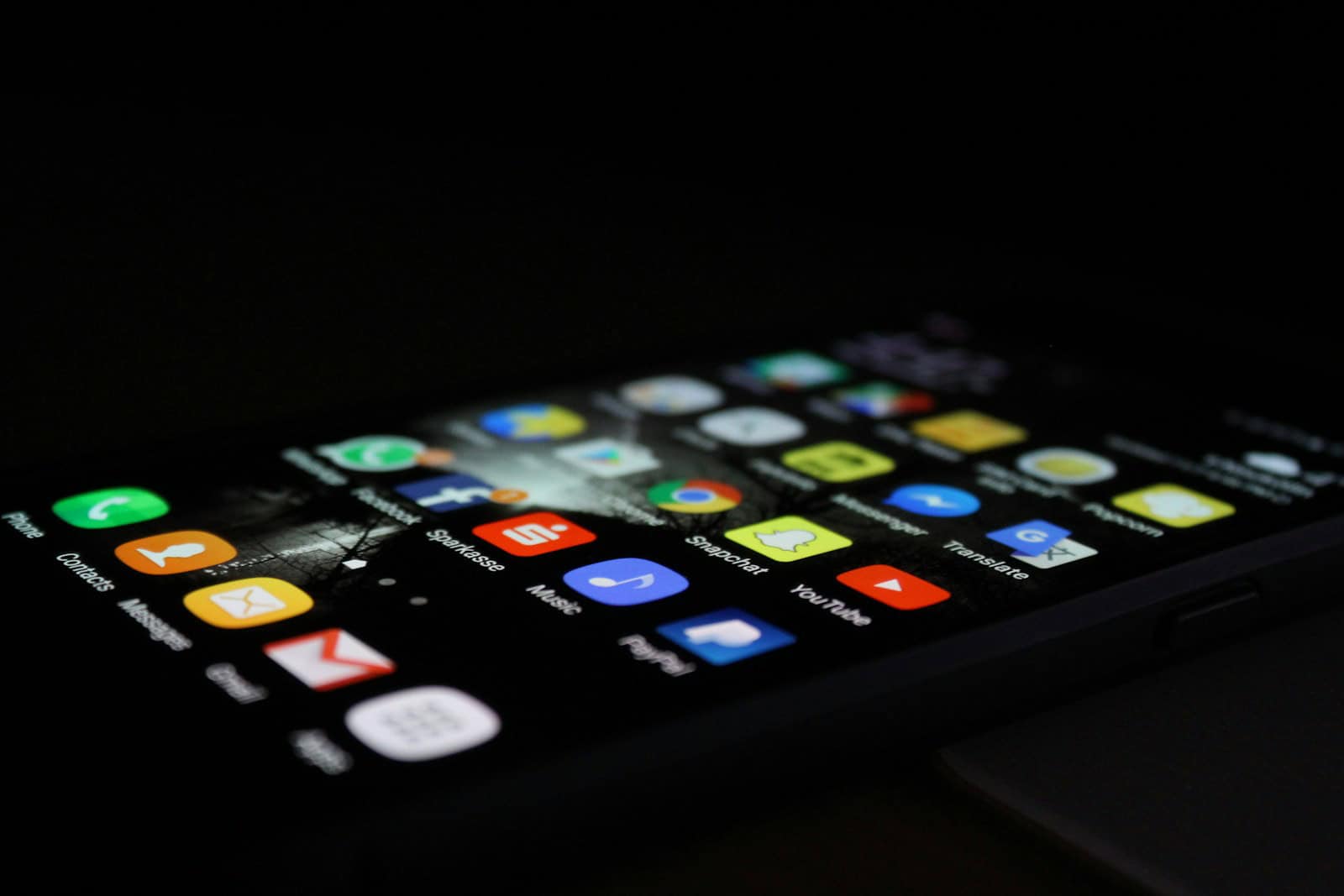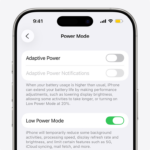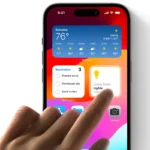Are you missing calls but not even hearing your phone ring? Finding your Android phone sending calls straight to voicemail can be incredibly frustrating, especially when you’re waiting for important calls. The most common causes are accidentally enabled Do Not Disturb mode, call forwarding settings, or network issues that can be fixed with simple troubleshooting steps. This issue affects many Android users across different phone brands, from Samsung Galaxy to Google Pixel devices.
Missing calls can impact your personal and professional life if left unresolved. You might miss job opportunities, important family updates, or urgent messages. The good news is that most cases of calls going straight to voicemail can be fixed without professional help or technical knowledge.
If your Android phone is sending calls straight to voicemail without ringing, it usually means something is blocking the incoming calls. Here’s how to troubleshoot and fix the problem:
1. Check Do Not Disturb Mode
- Go to: Settings → Notifications → Do Not Disturb
- Make sure it’s turned off. If it’s on, calls may be silenced or sent to voicemail.
2. Check Your Phone’s Sound Settings
- Go to: Settings → Sound
- Make sure your ringer volume is up and your phone is not on silent or vibrate mode.
3. Turn Off Call Forwarding
Call forwarding can send calls directly to voicemail if misconfigured.
- Go to: Phone app → Tap three dots (menu) → Settings → Calls → Call forwarding
- Disable any forwarding settings that are on.
4. Check Airplane Mode
Airplane mode disables all network connections.
- Swipe down from the top → Make sure Airplane mode is off
5. Disable Bluetooth (Just in Case)
Sometimes your phone may be connected to a Bluetooth headset that answers the call silently.
- Swipe down → Turn off Bluetooth and try calling your phone again.
6. Check for Blocked Numbers or Spam Protection
- Phone App → Settings → Blocked numbers
- Unblock any numbers you may have blocked by mistake.
- Phone App → Settings → Caller ID & spam
- Turn off “Filter spam calls” temporarily to test if it’s flagging valid calls.
7. Make Sure Your SIM Card Is Working
- Remove the SIM card, clean it gently, and reinsert it.
- Try the SIM in another phone to rule out hardware/network issues.
8. Update Carrier Services and Phone Software
- Go to: Settings → System → Software update
- Check for system updates.
- Visit the Google Play Store and update Carrier Services.
9. Contact Your Carrier
If everything seems fine on your phone, your carrier may be blocking calls due to:
- Missed payments or account issues
- Network provisioning problems
- SIM deactivation
Call your carrier’s support line to make sure your service is active.
10. Reset Network Settings (Last Resort)
If nothing else works:
- Go to: Settings → System → Reset options → Reset Wi-Fi, mobile & Bluetooth
- This won’t delete your apps or photos, but you’ll have to re-enter Wi-Fi passwords.
Key Takeaways
- Check your phone’s Do Not Disturb settings and call forwarding options as these are the most common causes of missed calls.
- Restart your device and check for software updates to fix system glitches that may be affecting call handling.
- Network issues can cause call routing problems, so toggle airplane mode or contact your carrier if basic fixes don’t work.
Understanding Voicemail on Android
Voicemail on Android phones serves as a backup when you can’t answer calls. The system has several features and settings that affect how calls are handled on your device.
How Voicemail Works on Android Devices
Voicemail on Android captures messages when you miss calls or when your phone directs calls straight to voicemail. Most Android phones offer basic voicemail that stores audio messages from callers.
Many carriers now provide Visual Voicemail, which shows a list of messages you can play in any order. To turn this on, open your Phone app, tap the three dots for “More,” then go to “Settings” and find the “Voicemail” option to enable Visual Voicemail.
You can typically access your voicemail by:
- Holding down the “1” key on your dialer
- Tapping the voicemail icon in your Phone app
- Using Visual Voicemail if enabled
Your voicemail greeting can be changed in your Phone app settings, letting you personalize what callers hear.
Common Reasons for Android Calls Going Straight to Voicemail
Several settings and conditions can make incoming calls go directly to voicemail without ringing:
- Do Not Disturb mode – When turned on, calls may skip ringing
- Call forwarding – If active, redirects calls elsewhere
- Call barring – Blocks specific numbers
- Poor signal – No service means no incoming calls
- Blocked numbers – Blocked contacts go straight to voicemail
Sometimes this happens at the carrier level rather than on your phone. Network issues can cause this problem as well.
Many users find this issue happens randomly, making it hard to spot the cause. Checking your phone settings is usually the first step to fix missing calls.
Troubleshooting Basic Settings
When calls go straight to voicemail on your Android phone, several basic settings could be causing the problem. Checking these settings first often solves the issue quickly without needing technical support.
Checking the Do Not Disturb Mode
Do Not Disturb (DND) is a common culprit when calls don’t ring through. This feature blocks incoming calls and sends them straight to voicemail.
To check DND settings:
- Swipe down from the top of your screen to access Quick Settings
- Look for the Do Not Disturb icon (usually a crossed-out bell or circle)
- If it’s on, tap it to turn it off
You can also check the full DND settings:
- Open Settings
- Tap Sound or Notifications
- Select Do Not Disturb
Check for any schedules that might turn DND on automatically. Some phones have options to allow calls from certain contacts even during DND. Make sure these are set correctly if you need calls from specific people.
Examining Call Forwarding Options
Call forwarding can redirect your calls to voicemail without your phone ever ringing. This setting might be turned on by accident.
To check call forwarding:
- Open the Phone app
- Tap the three dots or menu button
- Select Settings
- Look for Supplementary services or Call forwarding
Make sure “Always forward” is turned off. If it’s active, disable it by tapping the option and selecting “Turn off” or “Disable.”
Some carriers also allow you to check call forwarding by dialing codes:
- *#21# checks forwarding status
- ##002# cancels all forwarding
If you recently switched SIM cards or had network issues, call forwarding might have been activated without your knowledge.
Reviewing Blocked Numbers
Your phone might send calls directly to voicemail if the number is on your block list. Check this list regularly, especially if you’re missing calls.
To check blocked numbers:
- Open the Phone app
- Tap the three dots or menu icon
- Go to Settings
- Look for Blocked numbers or Call blocking
Review the list of blocked numbers carefully. Remove any contacts that shouldn’t be there by tapping the X or trash icon next to them.
Some Android phones also have a Silence unknown callers feature that sends calls from numbers not in your contacts to voicemail. This setting is helpful for avoiding spam but might block legitimate calls from new numbers.
To check this setting, look in your Phone app settings under “Spam and Call Screen” or similar options.
Advanced Call Management
Modern Android phones offer powerful call management features that can help troubleshoot issues with calls going straight to voicemail. These settings give you more control over how your phone handles incoming calls and can often resolve frustrating calling problems.
Customizing Call Forwarding Rules
Call forwarding lets you redirect incoming calls to another number or voicemail under specific conditions. To set up call forwarding on Android, open the Phone app, tap the three-dot menu, and select “Settings” then “Call forwarding.”
You can create different call forwarding rules based on your needs:
- Forward when busy: Sends calls to another number when you’re on another call
- Forward when unanswered: Redirects calls after a certain number of rings
- Forward when unreached: Routes calls when your phone is off or has no signal
To fix voicemail issues, try turning off all forwarding options. Some carriers also let you manage these settings through their website or app.
Utilizing Call Barring Features
Call barring blocks certain calls from reaching your phone. This feature can sometimes send calls straight to voicemail without your knowledge.
To check your call barring settings:
- Open the Phone app
- Go to Settings > Calls > Call barring
- Make sure no unwanted restrictions are active
Some phones hide these settings under “Additional settings” or “Advanced settings.” If you can’t find them, contact your carrier.
Call barring can be useful for blocking spam, but incorrect settings might block important calls too. Review them carefully if people report difficulty reaching you.
Setting Incoming Call Ring Duration
The ring duration setting determines how long your phone rings before sending callers to voicemail. A short ring time might make it seem like calls go directly to voicemail.
To adjust your ring duration:
- Open the Phone app
- Find Settings > Calls > Answer/End calls (location varies by device)
- Look for “Ring time” or a similar option
Not all Android phones offer this setting directly. For some carriers, you need to dial special codes like **61NUMBERTIME# to change ring duration.
If the problem persists, try resetting network settings. This clears any problematic configurations that might be causing calls to bypass ringing.
Network and Software Considerations
Your phone network settings and software status play crucial roles when calls go to voicemail unexpectedly. Problems can stem from outdated operating systems, incorrect network configurations, or pending updates that need attention.
Impact of Outdated Software
Outdated software on Android devices often causes call routing problems. When your phone’s operating system isn’t current, it may have bugs that send calls straight to voicemail. Recent Pixel updates have sometimes created this issue for users.
Signs your software might be causing voicemail problems:
- Phone rings once then directs to voicemail
- Calls fail without notification
- Spotty call connections even with strong signal
Check your Android version by going to Settings > About phone > Software information. If you’re running software more than 3-6 months old, this could be your problem.
Many carriers also need their own updated configuration files to work properly. These files tell your phone how to connect to towers and handle calls correctly.
Resetting Network Settings
Resetting network settings often fixes voicemail routing issues without losing your data. This process clears all saved networks, Bluetooth connections, and cellular settings that might be causing problems.
Steps to reset network settings:
- Open the Settings app
- Tap System or General Management
- Select Reset or Reset options
- Choose “Reset network settings”
- Confirm and restart your phone
After resetting, your phone will reconnect to the network with fresh settings. This can fix call forwarding issues that send calls to voicemail.
Be aware that you’ll need to reconnect to Wi-Fi networks and pair Bluetooth devices again after the reset.
Ensuring App and System Updates
Keeping both your system and phone app updated is key to preventing voicemail issues. Many Android users have found that updating resolves calls going straight to voicemail.
Important updates to check:
- Phone app – Open Play Store, search for “Phone” and update if available
- Carrier Services app – Updates how your phone connects to your network
- System updates – Go to Settings > System > System update
Carrier-specific apps also need updates. Apps like My Verizon, T-Mobile, or AT&T may contain important network configuration updates that affect call handling.
Some updates need a good internet connection to download. Use Wi-Fi when updating to ensure complete installation without interruption.
Professional Solutions and Services
When business calls go straight to voicemail, it can damage professional relationships and lose potential sales. Professional tools can help manage calls more effectively and create better voicemail experiences for callers.
Leveraging Business Tools Like RingCentral
RingCentral and similar business phone systems offer advanced call routing features that prevent missed calls. These systems can be configured to ring multiple devices simultaneously or in sequence before going to voicemail.
With RingCentral, professionals can set up their presence status to automatically route calls based on availability. This feature ensures that when someone is busy or in a meeting, calls are properly directed to colleagues or voicemail.
The platform also provides detailed call analytics that help identify patterns when calls are missed. This data can reveal if there are particular times of day or specific callers that frequently go to voicemail.
Teams can also set up shared voicemail boxes and notifications, ensuring that important messages are seen by multiple team members.
Configuring Pre-Recorded Messages for Work Hours
Creating professional pre-recorded messages for different situations helps callers understand why they’ve reached voicemail. Different messages can be set up for work hours, after hours, weekends, and holidays.
During work hours, the message might explain that all staff are currently assisting other customers. For after-hours calls, the message can include the business’s operating hours and when the caller can expect a return call.
Pre-recorded messages should always include:
- A thank you for calling
- Clear explanation of why their call wasn’t answered
- Expected response time
- Alternative contact methods (email, text, website)
Most business phone systems allow scheduling of different messages to activate automatically. This ensures callers always hear up-to-date and relevant information.
For businesses with international clients, consider recording messages in multiple languages to accommodate callers from different regions.
Device-Specific Modes and Features
Android phones have built-in features that can affect how calls are received. Understanding these settings helps troubleshoot why calls might go straight to voicemail without ringing.
Do Not Disturb (DND) Versus Airplane Mode
Do Not Disturb mode often causes calls to go straight to voicemail without alerting you. This feature silences calls and notifications while still keeping your phone connected to the network.
To check if DND is on:
- Swipe down from the top of your screen
- Look for the crescent moon icon
- Tap to turn it off if it’s enabled
DND settings can be customized. You can allow calls from specific contacts to come through while blocking others.
Airplane Mode is different. It disconnects your phone from all networks. When active, calls can’t reach your phone at all and go directly to voicemail. The airplane icon appears in your status bar when this mode is on.
Many users accidentally enable these modes through quick settings or by pressing button combinations on their phone.
Custom Call Forwarding Rules for Android
Call forwarding settings can redirect your calls to voicemail before your phone rings. These rules might be set up without you realizing it.
To check call forwarding:
- Open the Phone app
- Tap the three dots for the menu
- Select “Settings” then “Call forwarding”
- Look for active forwarding rules
Your Android may have call screening options that send unknown numbers to voicemail. Some carriers also offer services that filter spam calls automatically.
Ring duration settings affect how long your phone rings before sending calls to voicemail. If set too short, you might miss calls thinking they went straight to voicemail.
Carrier-specific forwarding features can be checked through your phone’s settings or by dialing special codes like *#61# to see the current status.
Frequently Asked Questions
Many Android users face issues with calls going straight to voicemail. These problems often stem from specific phone settings or network conditions that can be easily fixed once identified.
What can cause an Android phone to bypass ringing and send incoming calls directly to voicemail?
Several settings can cause calls to bypass ringing. Do Not Disturb mode is a common culprit that silences calls when active.
Call forwarding settings might be enabled without your knowledge. This feature automatically redirects incoming calls to another number or voicemail.
Poor network coverage can also cause this problem. When your phone has no signal, calls typically go straight to voicemail without showing as missed calls.
Call barring, which restricts specific numbers, might be active on your device. Some users unknowingly block contacts who then go directly to voicemail.
How do I disable the setting that sends calls directly to voicemail on my Android device?
Check your Do Not Disturb settings first. Go to Settings > Sound > Do Not Disturb and make sure it’s turned off.
Disable call forwarding by opening your Phone app. Tap the three dots menu > Settings > Call settings > Call forwarding and turn off all forwarding options.
Review your blocked numbers list in your Phone app settings. Remove any contacts you don’t want to send directly to voicemail.
Turn off Airplane mode and check that Bluetooth isn’t connected to a device that might be capturing your calls.
Is there a reason my contacts’ calls are going straight to voicemail on my Samsung Android device?
Samsung devices have unique contact settings that can route specific callers to voicemail. Check your Contacts app settings to ensure contacts aren’t set to “route to voicemail.”
One-ring calls might be happening if Battery optimization is too aggressive. Check Device Care > Battery > Settings and ensure the Phone app isn’t being put to sleep.
Samsung’s spam protection features might mistake legitimate contacts for spam callers. Review your call screening settings in the Phone app.
How can I troubleshoot my Android phone when it’s not ringing and calls go straight to voicemail?
Restart your phone first. This simple step often fixes temporary software glitches causing call routing problems.
Check for system updates as outdated software can cause calling issues. Go to Settings > System > System update.
Reset network settings if problems persist. Go to Settings > System > Reset options > Reset network settings.
Test your SIM card in another phone if possible. This helps determine if the issue is with your SIM card or phone.
What steps should I take if my boyfriend’s phone calls are consistently going to my voicemail without ringing?
Check if his number is accidentally added to your blocked list. Go to Phone app > Settings > Blocked numbers.
Make sure his contact isn’t set with a silent ringtone. Open his contact card and check the ringtone setting.
Verify your Do Not Disturb exceptions. You might need to add him to your “Priority only” exceptions list.
Consider asking him to check his phone settings too. The issue might be on his end, such as low signal strength when calling.
Could a recent update on my Google Pixel cause all incoming calls to go directly to voicemail?
Yes, Pixel phones sometimes develop call routing issues after system updates. Check the Phone app permissions after updating to ensure it has all necessary permissions.
The Digital Wellbeing app on Pixel phones can interfere with calls. Go to Settings > Digital Wellbeing and check if call restrictions are enabled.
Pixel’s Adaptive Battery feature might be limiting Phone app functions. Turn it off temporarily in Battery settings to see if calls start coming through.
Clear the Phone app’s cache if issues started after an update. Go to Settings > Apps > Phone > Storage > Clear cache.







